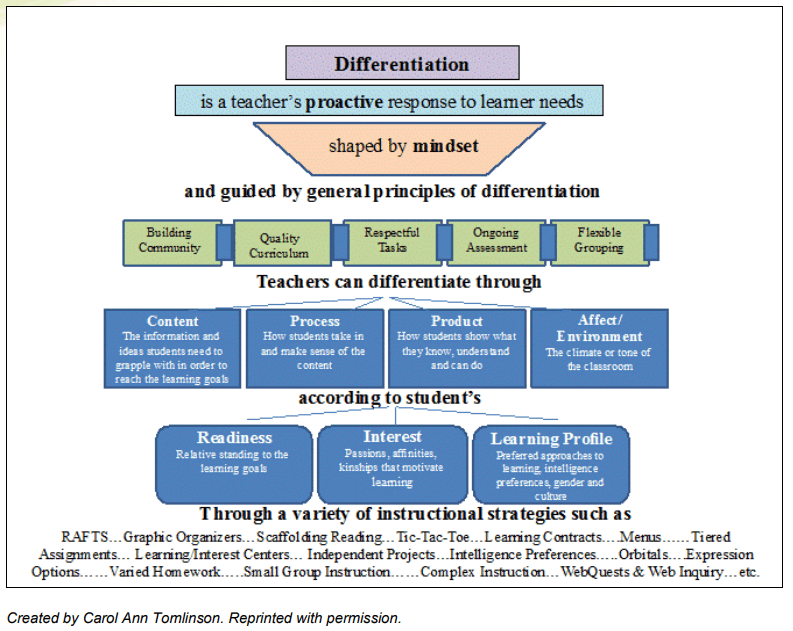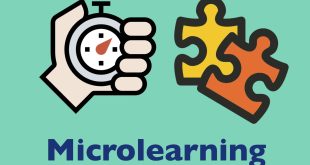M. Scott Peck, the American psychiatrist, once said “Share our similarities, celebrate our differences.” This quotation resonates quite well in schools where no two students are exactly the same. Everyone is uniquely different. You will never find a classroom full of students who are all alike. Of course, not all students understand concepts in the same way or at the same pace. Take a look at this article that discusses why differentiated instruction is important to learn about how to better deliver your lessons to reach EVERYONE!
Table of Contents
Differentiated Instruction Definition
Differentiated instruction definition: Tomlinson and Allan (2000) defined differentiated instruction as “simply attending to the learning needs of a particular student or small group of students rather than the more typical pattern of teaching the class as though all individuals in it were basically alike.”
What does this mean? How can teachers integrate it within the classroom, and why even is this strategy that important?
Why is Differentiated Instruction Important?
Algozzine and Anderson (2007) argued that many students continued to function at the “margins” of their classrooms, never completely achieving their potential, despite teachers’ best efforts to encourage them. In essence, the issue was the students’ wide range of differences.
The final goal, the exams, and the preparation for them were the same for all students, despite the fact that each student learns differently. The authors proposed that differentiated instruction was the solution.
The idea of differentiated education was not new. These experts suggest that it dates back to the time when schools had just one classroom and children were taught in groups according to their grade levels, with differentiated instruction for the topic, activities, and final output.
Although WattsTaffe et al. (2012) acknowledged that differentiated teaching was not new, they said that it was becoming more significant as a result of the large number of students who did not achieve the highest levels of skills necessary at school.
Differentiated teaching, according to Tomlinson and Allan (2000), is more than just one tactic or set of tactics. A “way of thinking about teaching and learning” was involved. Tomlinson also highlighted that differentiated instruction was not, in and of itself, an instructional method, a guide for teaching, or something a teacher performed to fill a hole in the curriculum.
She asserted that it was a teaching philosophy founded on a number of convictions:
- Students of the same age differed in terms of their readiness to learn, their learning styles, their interests, their experiences and backgrounds.
- These differences were substantial enough to warrant the students being taught different things at different speeds and with different support.
- Students learnt best when an adult pushed them just beyond the point where they could work without assistance.
- Students learnt best when a connection was made between the curriculum content and their personal interests and experiences.
- Students learnt best when the learning was natural.
- Students learnt best when they felt they were respected members of the school community.
- The main job of the school was to maximize the potential of every student.

Examples of Differentiated Instruction
Differentiated instruction examples include strategies that the teacher can employ in the classroom.
Renzulli provides a plan that involves five dimensions to differentiate instruction: content, process, products, classroom organization and management, and the teacher’s own commitment. Take a look at figure 1 to understand the differentiating technique as a whole.

3 Research-backed Differentiated Instruction Strategies
Let’s discuss 3 differentiated instruction strategies that you can use in today’s classroom. Educators have started to shift their focus towards using assessment data to assist in the modification of the curriculum for the benefit of students with different interests and abilities.
According to differentiated teaching, learning is most successful when teachers can identify students’ present functioning levels and preferred learning styles, and then apply this knowledge to guide students toward a higher functioning level and more developed learning.
Another strategy of differentiated instruction is the flexible grouping of students. This includes the division of students with similar abilities into small groups or individually to work together on their assigned task/s which are pre-adjusted according to their interests, abilities and pace of learning.
This might interest you: Modern Methods Of Teaching That Make An Awesome Classroom
A study carried out on the idea of flexible grouping by Tieso in 2005 found that there was considerable and noticeable student achievement within a classroom that used this strategy.
Of course, teachers should use assessment data beforehand to ascertain the validity of such a strategy on each group of students and determine the objectives and desired learning outcomes.
Another effective strategy for differentiation is curriculum compacting. Curriculum compacting “is another process that can be used to eliminate or modify work that may already be mastered, and thus enable students to prove that they already know the course content. Curriculum compacting is an instructional technique that is specifically designed to make appropriate curricular adjustments for students in any curricular area and at any grade level. Essentially, the procedure involves:”
(1) defining the goals and outcomes of a particular unit or segment of instruction
(2) determining and documenting which students have already mastered most or all of a specified set of learning outcomes
(3) providing replacement strategies for material already mastered through the use of instructional options that enable a more challenging and productive use of the student’s time.
In one study on curriculum compacting or targeted students in one or more academic areas, 40 to 50 % of standard classroom material was condensed in a study on the topic.
There were no changes in the treatment and control groups’ post-test achievement results in math concepts, math computation, social studies, and spelling when teachers cut as much as 50% of the usual curriculum activities and resources for the targeted students.
Differentiated Instruction in Math & Science
On achievement post-tests in science, the students who had between 40 and 50 % of their curriculum deleted actually outperformed their counterparts in the control group.
Students in group one, whose curriculum was exclusively focused on mathematics, outperformed their counterparts in the control group on the post-test for math topics.

Benefits of Differentiated Instruction: Start Changing How You Teach!
Before we discuss the benefits of differentiated instruction, let us first compare how a class is different when the teacher implements this strategy.
| Traditional Classroom | Differentiated Classroom |
|
|
Read more: 7 Methods to Develop Creative Thinking Skills for Students
-
Focused on assessment and evaluation
Teachers who acknowledge the importance of matching teaching strategies to suit each learner are definitely an asset! Usually, these teachers utilise various ways to make sure they understand each learner’s needs. This can take shape in one-to-one conversations, observations, assessments, class discussions and debates, and so on.
This is mirrored in a differentiated classroom that dispels the idea of “final assessment” but instead focuses on “diagnosis” or “continuous assessment.”
Teachers can use the diagnostic strategy of assessment throughout a certain chapter or unit by constantly observing and recording a student’s development and interests.
After that, the teacher can use this analysis to create a framework that best suits the student’s needs. Accordingly, final assessments can take different shapes to reveal each student’s fruit of knowledge at the end of a unit or chapter.
-
Combines both group and individual instruction
From experience, teachers will find that group or class instruction is fruitful and effective at times. After all, it can pave the way for a great class discussion and develop students’ debating and presentational skills. On the other hand, a differentiated classroom makes use of both group AND individual or small-group instruction.
-
Differentiated instruction is dynamic, adaptable and fruitful
One of the many benefits of differentiated instruction is that learning goes two ways. It is true that teachers are more knowledgeable about their subjects, but they are in a constant state of learning about their students and their needs. That is why it is important that teachers observe their students throughout the academic year to make notes of their progress and shift between teaching approaches as needed.
Moreover, a decent teaching approach that implements differentiated instruction is often created to be adaptable enough to both meet the students’ needs and engage them as well.
-
Focused on the welfare of the student
The foundation of differentiated instruction is the idea that learning experiences are most fruitful when they are interesting, relevant, and impressive to students. That concept has the implication that not all students will always find the same learning opportunities equally engaging and intriguing.
Additionally, differentiated teaching recognises that not all students have the same learning foundations at the beginning of a particular study and that subsequent information, skill, and understanding must be built on earlier knowledge and skills.
In diverse classrooms, teachers who diversify instruction work to give each student a learning experience that is properly challenging. These educators are aware that often a job that presents no challenge to some students is difficult for others.
7 Things To Know To Apply A Standards-Based Grading Scale
The Skolera team is always keen on providing the best digital solutions that help teachers and heads of departments reach their ultimate teaching objectives. Our Learning Management System (LMS) and School Management System (SMS) are trusted by experts in numerous schools and universities. Book a free demo now to test all the features before you commit!
Now that you understand everything related to differentiated instruction, go the extra mile and try it with your class. You’ll thank your past self for making that decision; it will definitely get you the results you want for your students!
Sources:
 Skolera LMS Blog Educational Technology Articles and News
Skolera LMS Blog Educational Technology Articles and News




